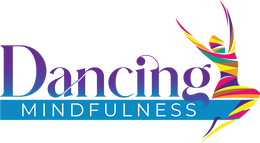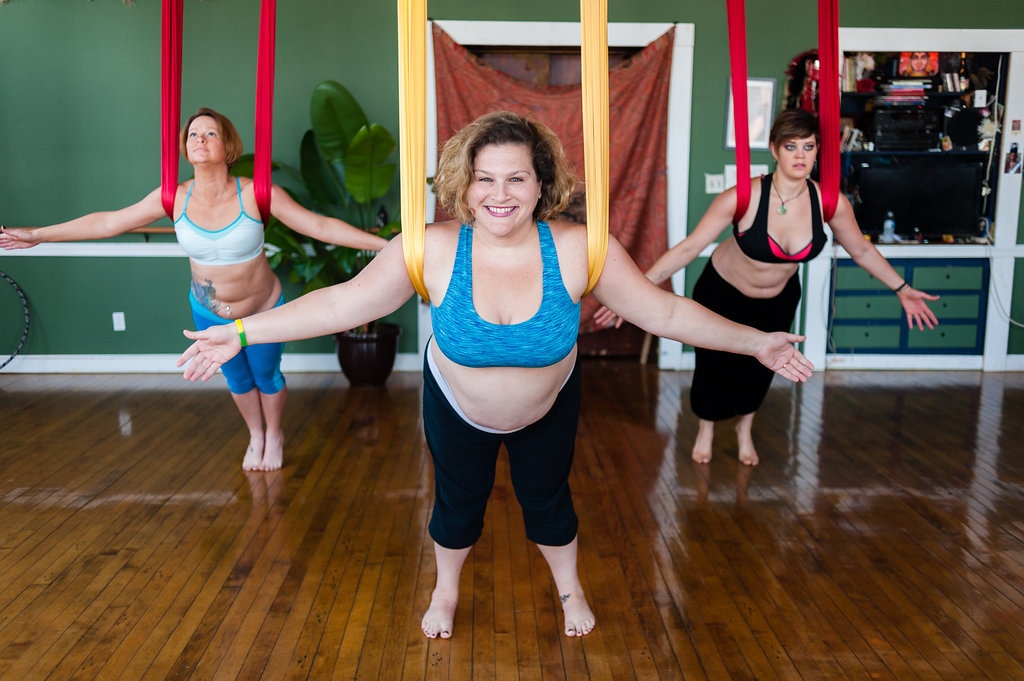|
If you’ve followed Dancing Mindfulness and other projects connected to my Institute for Creative Mindfulness work, you’ve likely encountered the hashtag #redefinetherapy. What started as a book chapter and a hashtag is quickly turning into a movement that you may feel the call to embrace. I owe credit to Emily Wichland, the editor of my 2015 book Dancing Mindfulness: A Creative Path to Healing & Transformation for articulating the challenge to redefine therapy. In my first draft of Dancing Mindfulness, I structured the closing chapter around my experience of feeling more excited by practices that are happening outside of the bounds of conventional psychotherapy. To excerpt:
Formal psychotherapy has played a great role in my healing process and I respect the practice of counseling and therapy. Additionally, I am proud of what I’ve been able to achieve as a counselor in helping others. However, the overall direction of where my field is going does not excite me as much as the healing wonders I witness when people organically connect with their own creativity. I see many gifted professionals in psychotherapy stifled in their creativity and intuition by the rigid institutions that they work for or the insurance companies they fear, imposing unrealistic medical standards of care on their work. In sum, there is only so much that traditional therapy can do for people in the modern era because of the flaws in our healthcare system. What really excites me is what’s happening in healing communities across the globe. When I see people realize that healing and wellness are not synonymous with the broken systems that so many turn to in order to heal, my heart and soul smile. When Emily returned the chapter edits to me, she suggested that I title the chapter Redefining Therapy. When I read this, my heart leaped into my stomach and then back again. I was excited—my immediate response was “Yes!” This notion of redefining therapy is what I see so many of our clinicians drawn to the Dancing Mindfulness community practicing in their lives. However, part of that visceral response also included a sense of terror. I asked myself, “Can I really be so bold, especially when many people in my field already resent those like me, challenging the value and the relevance of traditional psychotherapy taught in halls of academia?” By mindfully embracing these remnants of fear, I eventually arrived at the conclusion that naming the final chapter Redefining Therapy was an act of brilliance. The phrase represents everything that my work is about; it represents the sense of excitement I see percolate from the beautiful individuals I train when they are given permission to practice their healing arts outside of a rigid box. As part of promoting the book’s release, Holly Speenburgh, a member of our Dancing Mindfulness community who was helping me with marketing at the time, began using the hashtag #redefinetherapy. For people in our community, it came to represent a way of doing things that might make your university counseling professors’ heads spin with frustration. Yet for us, it signifies the call for therapists to be inspired by what is happening outside of the literal boxes of our clinical offices and to bring some of this inspiration into how we teach our clients to heal. Redefine therapy also challenges potential consumers of mental health services to consider that conventional psychotherapy or psychiatry may not signal the only hope for treatment and recovery. Perhaps yoga or dance or raising your animals have cultivated a greater sense of safety in your own body than engaging in therapy ever has. Maybe martial arts or fly-fishing or backpacking through Europe or becoming an advocate in your community for change have helped you to experience a greater sense of empowerment than you have ever known. Like with many people I know both personally and professionally, it’s very likely that a combination of factors—which may or may not include psychotherapy—have led to your recovery and renewal. While it may seem like common sense to embrace this all of the above approach to healing, please understand that I still encounter a great deal of resistance from other therapists and academics about embracing the wide range of human experience as potential outlets for transformation. Maybe these colleagues are afraid that highlighting the importance of other healing practices and communities of connection will delegitimize what we do as therapists and make our work seem less relevant. Perhaps the resistance is born of a good old fashioned fear of what we do not understand. Another possibility is a fear of deeply engaging the body and its power as a vehicle for change, deferring instead to the familiarity of the talking cure in therapy. While I am not opposed to talking or verbal methods in the overall healing process, I’ve seen too many people use words only to avoid and to deflect. In many of these situations, deeper healing must take place in our emotional and somatic brains that words cannot directly reach. The journey into our emotional and bodily selves is difficult in our culture where we are constantly bombarded with messages that feelings cannot be trusted and feeling them makes us weak. The media and many of the tastemakers in our society shame us for having bodies that do not meet some perfect standard of what bodies should be. Additionally, the impact of religious messaging and shame-based interpretations of religious teachings leave many to doubt the wisdom inherent in their bodies. The time is now to speak up about what has helped you to reach your desires in healing and recovery. It’s 2017 and I am still fighting licensing boards and continuing education standards committees in certain states about the relevance of yoga, mindfulness, and expressive arts in the practice of professional therapy. A limitation for what works in healing and recovery still permeates many of the institutions that shape research, policy, and clinical practice guidelines. Moreover, the age-old axiom this is the way we’ve always done it, often invoked to honor tradition in many clinical and academic settings, seems to be hampering progress in an era where we need fresh solutions. Addiction is killing us in epic proportions, old trauma scripts are being triggered by current events and the state of the world, and people are feeling a greater sense of despair as we begin to wake up from our comas of oppression and realize that who we are matters. Showing up for life is hard work. As therapists, are we using all possible strategies for helping clients to embrace the challenge? As potential consumers of mental health and recovery services, what problems might we have with conventional psychotherapy and what have we discovered that may work better instead? My challenge is that we begin having these conversations with greater vigor. What does redefining therapy mean to you? What has really helped you to embrace healing and recovery, either inside or outside of traditional structures of psychotherapy and treatment? Maybe it’s been one primary practice, maybe it’s been an all-of-the-above approach. My vision long term is to use this blog to hold space for people to share about what redefining therapy means to them and how they have put a wide array of healing practices into their lives. If it’s psychotherapy, I want to hear about what worked in it for you. If it’s Muay Thai kickboxing or aerial yoga or climbing mountains or volunteering at the soup kitchen or becoming a minister in the Church of the Dude, I want to hear about that, too. Feel free to submit your reflections and stories to me and I will be happy to publish them with your permission. Long term, my goal is to be able to publish an entire book called Redefining Therapy where we are not afraid to speak about what has truly worked for us and to continue to shatter the paradigm for what brings about change, healing, and recovery. Photography by Natalie Mancino, June 2015, as part of the Body Diversity Aerial Yoga Project
5 Comments
chris flak
5/16/2017 08:19:24 am
Thanks for your innovative, refreshing perspective. As a therapist nearing retirement, I had hoped to gain bureaucratic approval for alternative modalities to traditional talk therapy much earlier in my career. I had always found our profession "curious" as it seems more difficult to convince "the powers to be" than our clients, of the merits of new approaches. But, we don't give up so easily.....and deep down, we know that healing can take place through many different forms. You are on target, and keep up the good work!
Reply
7/5/2022 10:21:48 pm
I found this article very interesting. I have learned a lot of information from your article, and now have increased my knowledge through your article
Reply
Leave a Reply. |
Dr. Jamie MarichCurator of the Dancing Mindfulness expressive arts blog: a celebration of mindfully-inspired, multi-modal creativity Archives
September 2022
Categories
All
|
Contact |
Memberships & Affiliations |
|
Please direct all inquiries to:
[email protected] © Mindful Ohio & The Institute for Creative Mindfulness, 2021 Terms of Use Privacy Policy |
Dancing Mindfulness/The Institute for Creative Mindfulness is an organizational member of the International Association of Expressive Arts Therapists, the Dance First Association, and NALGAP: The Association of Gay, Lesbian, Bisexual, Transgender, Addiction Professionals and Their Allies; Dancing Mindfulness proudly partners with The Breathe Network and Y12SR: The Yoga of 12-Step Recovery in our shared missions.
|


 RSS Feed
RSS Feed